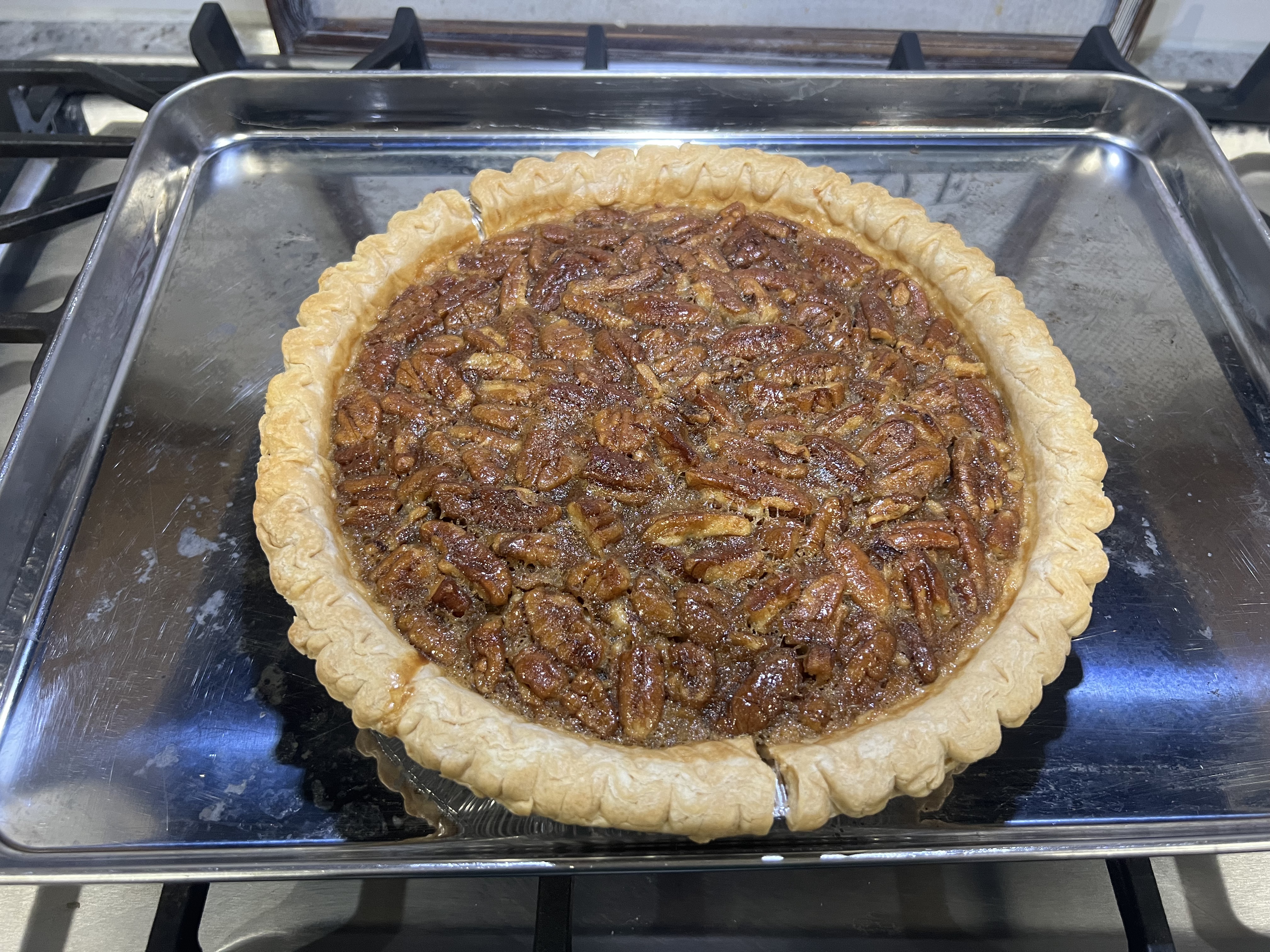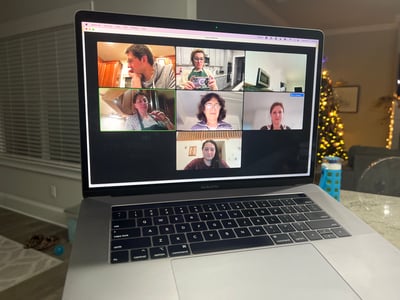
Unlock the Power of Confidence in Language Learning
Mistakes are How We Grow Learning a new language can be an exciting adventure, but it can also be filled with ...
Don't just learn a language, experience it.

Table of Contents
There’s something really intimate about cooking with someone, especially in your own home. Imagine a group of ten strangers who speak a different language than you, hanging on your every word as you teach them how to make the most American dessert imaginable: a pecan pie.

To set the scene, it’s two days before Thanksgiving, and most of my audience has never celebrated an American Thanksgiving before, let alone made a pecan pie. Honestly, as a first-generation American, I felt like a fraud for asking this group to trust that I knew what I was doing in making one since I didn’t grow up eating pecan pies on Thanksgiving, but I used that truth and talked about my history with the holiday at length.
Still, as a classically trained pastry chef who has worked in some of the most renowned Michelin-starred restaurants in the world, I figured I’d be fine, and, at the very least, the group who was going to make pies alongside me would know the right, and wrong way to do it.
They were on board with the vision from the get-go.
Speak to an Expert About Language or Culture Training
If you’ve ever made a pecan pie, you know it’s pretty straightforward. You gather your ingredients and dump them in a bowl, basically. It’s not exactly a complicated recipe. But for an hour, we combined baking, holidays, traditions, and language and created something beautiful. We talked about adding in bourbon, a twist I included because I live in Tennessee, and how they can include regional or cultural ingredients from where they’re from to make the pie feel more familiar. We discussed the science behind how heavy cream turns into whipped cream because the fat molecules slam into each other, forming a thicker consistency. We whipped, stirred, tasted, and laughed for sixty straight minutes.
We talked about how even saying “pecan” can vary based on where you’re from (it’s the age-old debate of “pee-can” versus “pe-cahn” where I am very firmly in the first camp, for the record).
We even talked about switching measurements from metric to imperial since baking is so specific, and a recipe can be changed dramatically with the slightest mismeasurement. We discussed oven temperature since 375° Fahrenheit yields a very different result than 375° Celsius.

Bringing tangible, physical learning outside of a classroom helped ten people who may never have understood the history or significance of something as simple as a Thanksgiving dessert. It was eye-opening for me. They’re not just learning how to make a pie – they’re learning why Americans make pies, what language to use when describing a pie, and how to share that with their loved ones. We took language learning to an intimate, tangible place, and I can’t wait to do it again.
If you’re interested in learning more about how you can learn, feel, touch, taste, and share language, let us know. There’s something that everyone can connect with because when you’re doing something you love, it doesn’t feel like learning, and that’s the best way to bring language to life.

Mistakes are How We Grow Learning a new language can be an exciting adventure, but it can also be filled with ...

Learn a Language While Enjoying Summer Activities What if you could enjoy yoga, making margaritas, doing seasonal ...

“If I'm selling to you, I speak your language; if I'm buying dann mussen Sie Deutsch sprechen” –Willy Brandt The ...
Please fill out the form below for more information or to schedule a consultation.